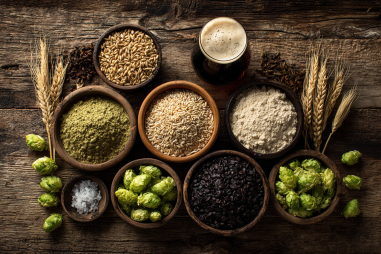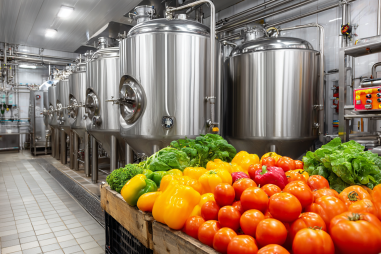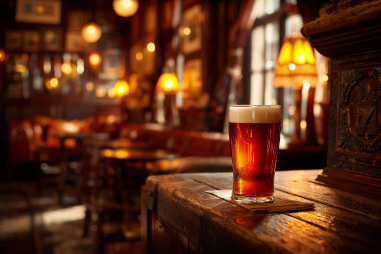Exploring the world of pastry stouts can be a delightful journey for beer lovers, especially those with a sweet tooth. These dessert-inspired brews combine the rich, robust flavors of stout with indulgent notes reminiscent of your favorite pastries and sweets. If you want to dive deeper into understanding pastry stout tasting notes, this guide is crafted just for you. We’ll explore what to expect, how to identify key flavors and aromas, and offer practical tips to enhance your tasting skills. Whether you’re new to pastry stouts or looking to refine your palate, get ready to savor every sip with confidence.
What to Expect from a Pastry Stout Tasting Experience
When you pour a pastry stout, the experience begins with the rich, dark appearance that usually boasts deep brown to nearly black hues with a creamy tan head. Unlike traditional stouts that primarily focus on roasted malt bitterness, pastry stouts often showcase a luxurious sweetness combined with complex layers inspired by desserts. Expect your tasting session to reveal flavors that evoke cakes, cookies, chocolate, caramel, sugars, and sometimes even hints of fruit or spice.
The initial sip often surprises with its balance between sweetness and bitterness, followed by a smooth, creamy finish. These beers tend to be full-bodied and satisfying, often warming and comforting, making them perfect for sipping slowly and savoring.
Key Flavor and Aroma Characteristics
Pastry stouts are a mosaic of flavors and aromas, each carefully crafted to mimic specific dessert components. When tasting, focus on the following signature characteristics:
- Sweetness: Look for sugar-based notes such as caramel, toffee, brown sugar, molasses, or even maple syrup. These are often balanced with roasted malts to prevent overwhelming cloying sweetness.
- Chocolate and Cocoa: Rich chocolate undertones ranging from bittersweet dark chocolate to creamy milk chocolate are common in pastry stouts, lending them that “dessert” quality.
- Vanilla: Vanilla additions or yeast-derived vanilla notes provide a smooth, mellow sweetness that complements other flavors without overpowering.
- Fruity Undertones: Some pastry stouts include notes reminiscent of berries, cherries, or stone fruits, often from added fruit or yeast character.
- Spices and Nuts: Depending on the recipe, subtle hints of cinnamon, nutmeg, or roasted nuts might peek through, adding complexity.
- Roasted Malt: The foundational bitter, toasted, or coffee-like flavors from malt roast underpin the sweetness, preventing it from becoming too sticky or one-dimensional.
- Aroma: Your nose will pick up the harmonious combination of sweet and roasted scents — think warm pastries fresh out of the oven, rich chocolate, and delicate hints of vanilla or spice.
How to Identify Common Dessert Influences
Recognizing the dessert inspirations behind pastry stouts takes a bit of practice but can be highly rewarding. Here are some common desserts you might detect notes of during your tasting:
- Cupcakes and Cakes: Sweet, vanilla-forward flavors combined with buttercream-like creaminess.
- Chocolate Brownies and Fudge: Intense cocoa bitterness balanced with sweet chocolate syrup vibes.
- Cookies and Biscuits: Nutty, buttery, and sometimes slightly salty edges that mimic baked goods like shortbread or graham crackers.
- Pies and Tarts: Fruity notes such as cherry, apple, or berry harmoniously blended with cinnamon or nutmeg spices.
- Ice Cream and Custard: Creamy mouthfeel with smooth vanilla or caramel nuances that resemble rich dessert custards or creamy gelato.
Try to visualize the dessert as you sip — is it reminding you of a cinnamon roll, a tiramisu, or perhaps a chocolate lava cake? These mental connections help deepen your appreciation for the brew’s craftsmanship.
Texture and Mouthfeel Considerations
Texture plays a vital role in how pastry stouts deliver the full dessert experience. Most pastry stouts are medium to full-bodied, providing a plush, creamy mouthfeel akin to the softness of whipped cream or a decadent frosting. This is often achieved through the use of lactose (milk sugar), oats, or adjuncts like vanilla beans which add smoothness.
Look for these mouthfeel attributes when tasting:
- Creaminess: A silky, smooth sensation that coats the palate, often with a slight sweetness.
- Thickness: The beer may feel heavier or denser than standard stouts, mimicking the rich, dense qualities of pastry batter or frosting.
- Carbonation: Typically moderate to low carbonation complements the thick texture, making the beer easy to sip without excessive fizziness.
- Finish: Pay attention to how long the flavors linger — a long, sweet finish is often a hallmark of a pastry stout.
Tips for Note-Taking and Comparative Tasting
When tasting pastry stouts, keeping organized notes helps sharpen your sensory skills and track your preferences. Here are some helpful tips:
- Use a Tasting Sheet: Divide it into aroma, flavor, mouthfeel, and overall impressions.
- Focus on One Beer at a Time: Rinse your palate with water or neutral crackers between samples.
- Make Descriptive Notes: Use adjectives like “buttery,” “caramelized,” “vanilla-rich,” or “roasted coffee” to capture what you experience.
- Compare Similar Styles: Tasting different pastry stouts side-by-side highlights subtle differences in sweetness, bitterness, and texture.
- Note Serving Temperature: Pastry stouts often reveal more complexity when served slightly warmer (around 50-55°F or 10-13°C).
This disciplined approach helps develop a more nuanced palate and you’ll start distinguishing individual ingredients or brewing techniques that make each pastry stout unique.
Popular Pastry Stouts and Their Signature Notes
To get you started, here are a few well-loved pastry stouts that showcase a range of signature tasting profiles:
- Black Note Imperial Stout (Goose Island): Known for its rich espresso, dark chocolate, and vanilla character with a balanced sweetness and velvety mouthfeel.
- Lactose-based Stouts (e.g., Left Hand Milk Stout): Creamy and sweet with pronounced notes of caramel, milk chocolate, and a touch of roasted coffee.
- Imperial Pastry Stouts (various craft breweries): Massive sweetness reminiscent of baked goods like brownies or cinnamon sugar cookies combined with silky vanilla and spice.
- Breakfast Stouts with Coffee and Maple Syrup: These often offer syrupy sweetness balanced by roasted coffee bitterness and subtle oak or vanilla.
- Chocolate Cherry or Raspberry Pastry Stouts: Fruity and tart notes blend seamlessly with dark malt sweetness and creamy body, invoking fruit tarts or chocolate-covered fruit desserts.
Exploring these examples can give you a clearer idea of how diverse and creative pastry stouts can be.
Enhancing Your Pastry Stout Tasting Journey
Tasting pastry stouts is as much about discovery as it is enjoyment. Rather than rushing through, take your time to appreciate the artistry behind these complex brews. Experiment with pairing pastry stouts alongside actual desserts—chocolate cake, vanilla ice cream, or fruit tarts can beautifully complement the beer and highlight different tasting notes.
Joining tasting groups or craft beer forums can also expand your knowledge by exposing you to new brews and shared experiences. And above all, trust your own palate: no two tasters experience flavors identically, so your unique impressions are what truly matter.
By approaching pastry stout tasting with curiosity and attentiveness, you’ll soon master the subtle nuances that make this beer style an irresistible indulgence. Cheers to a sweet and satisfying tasting adventure!







